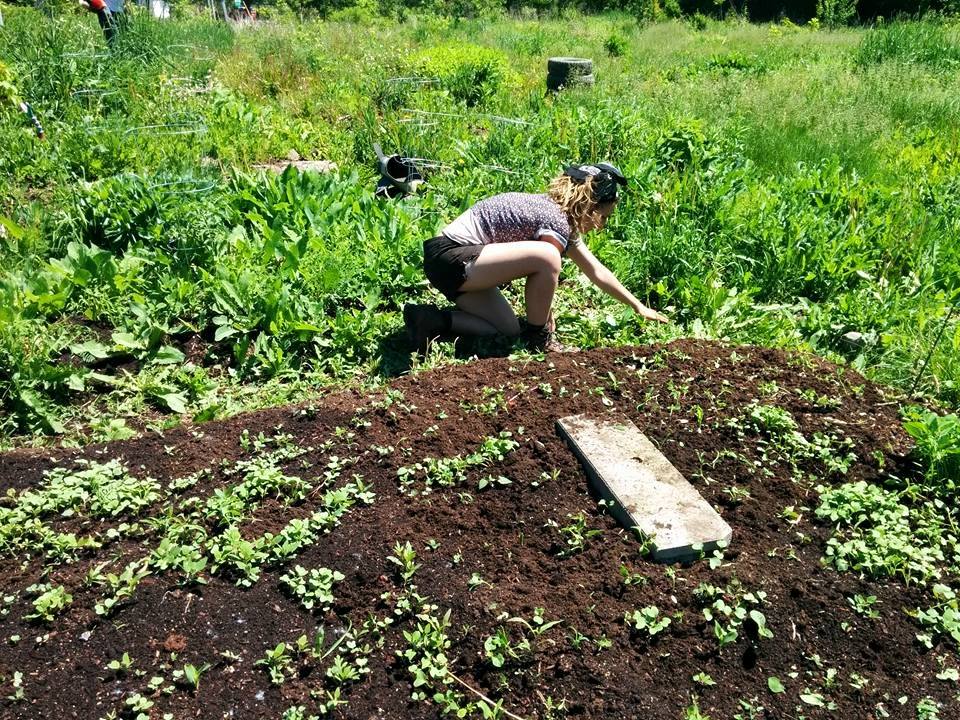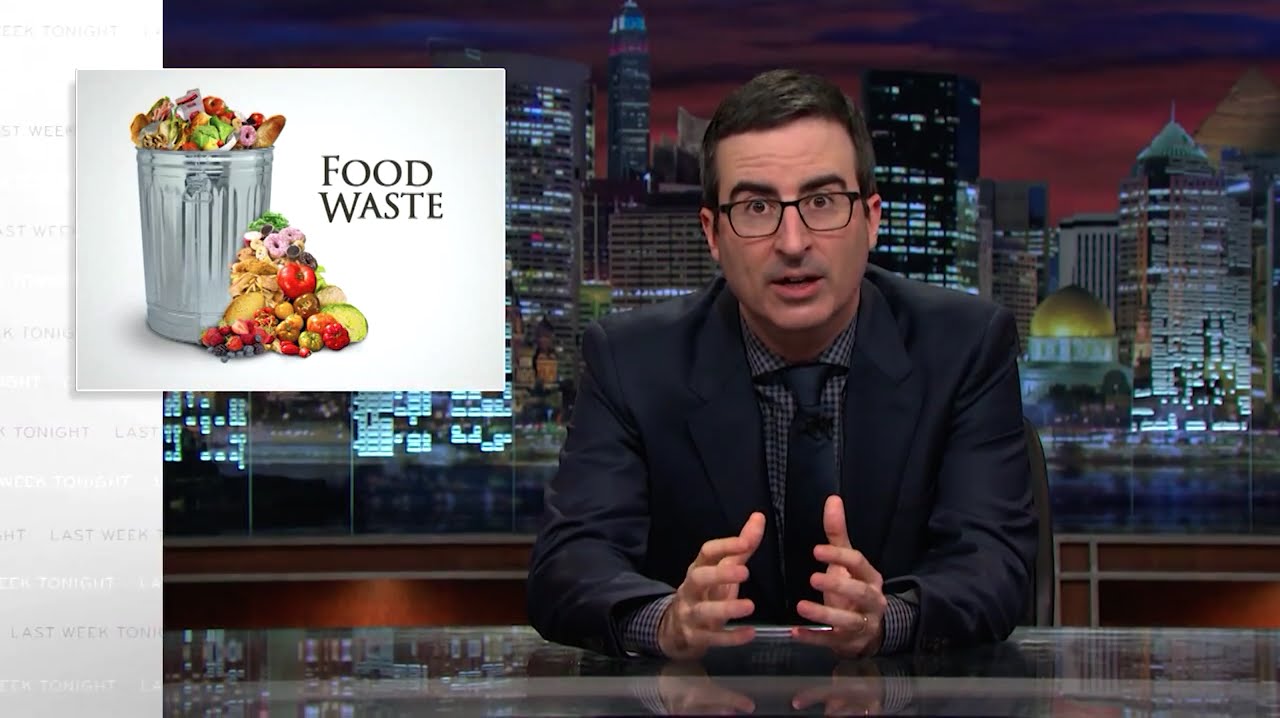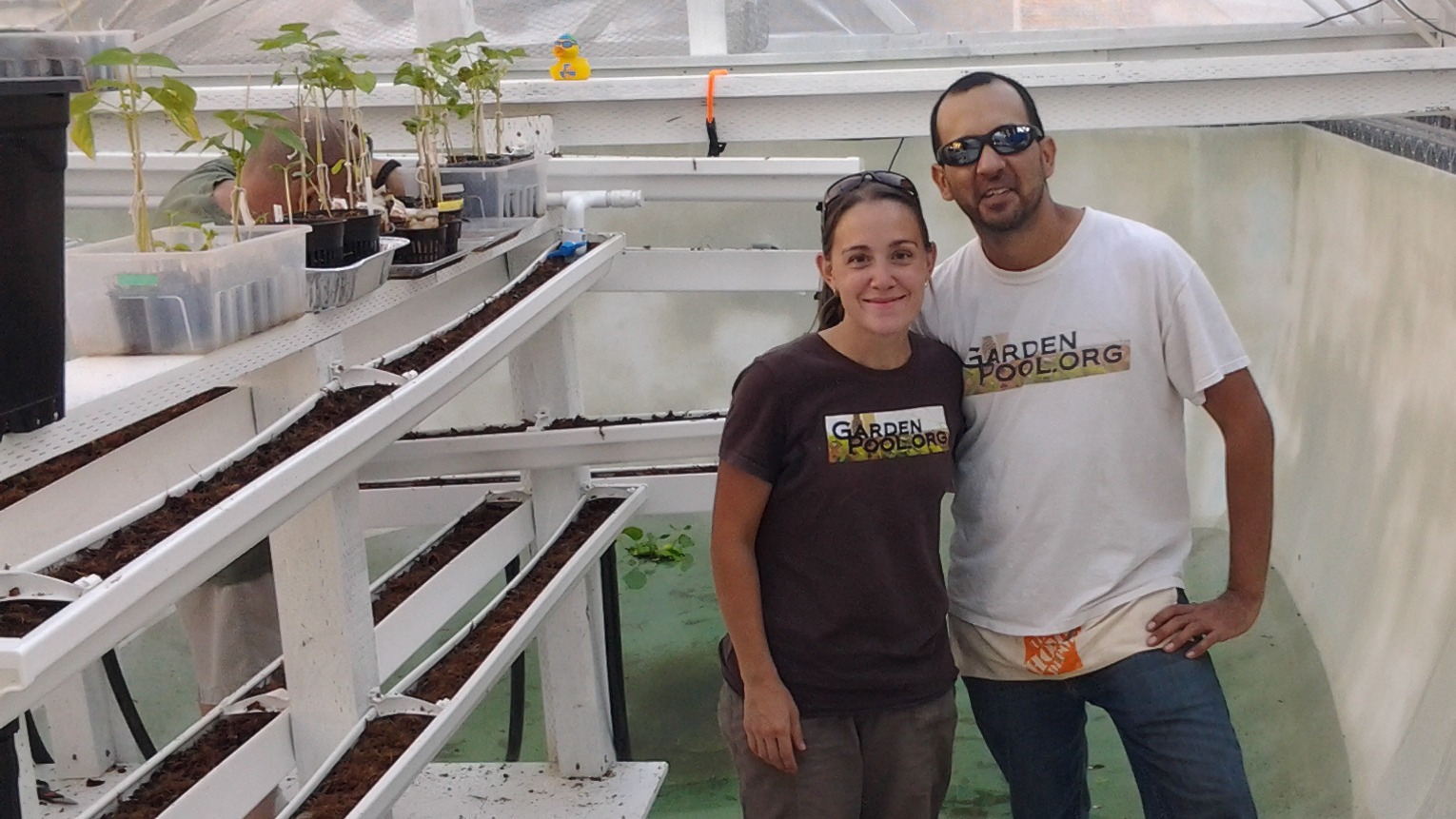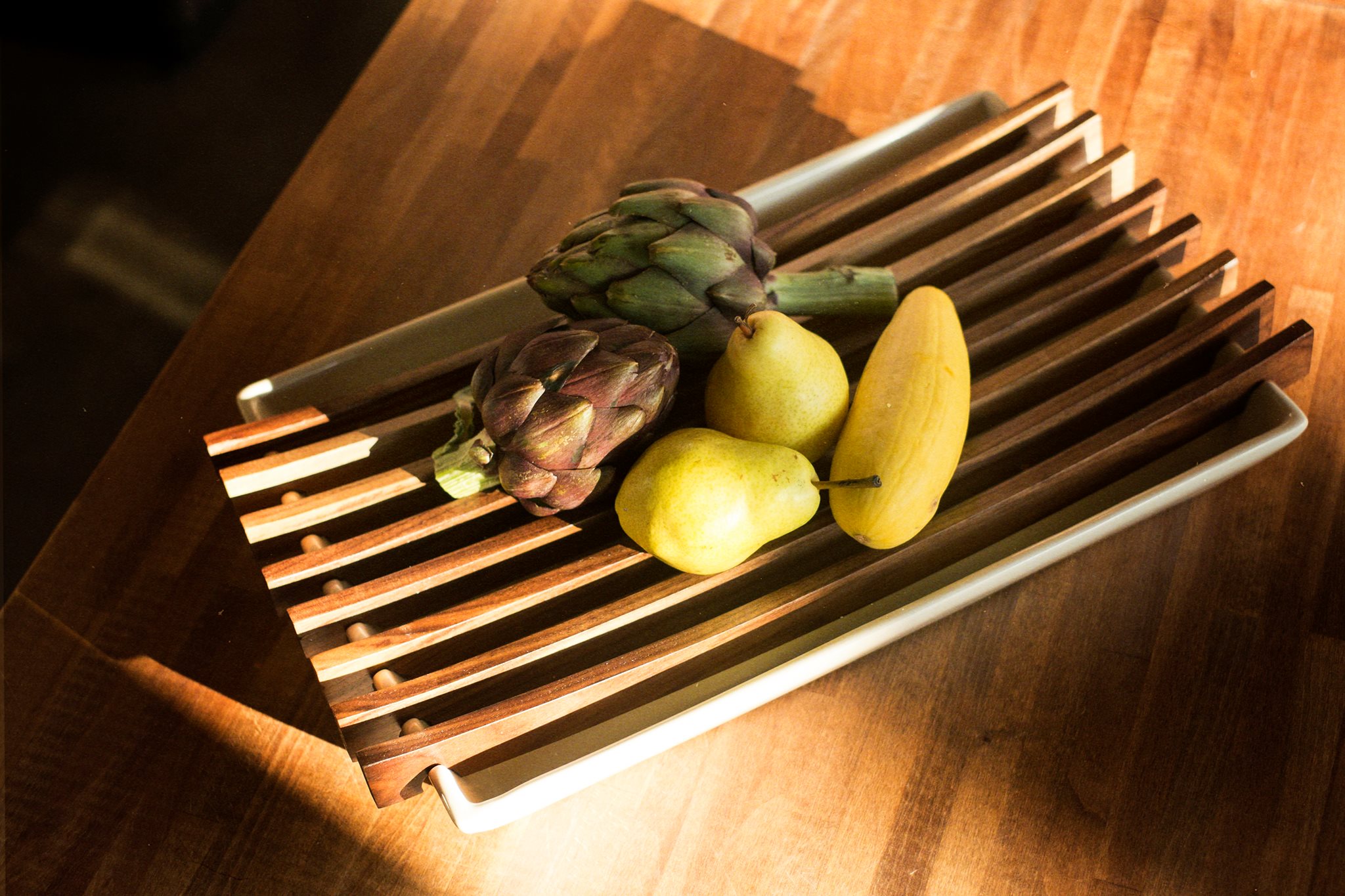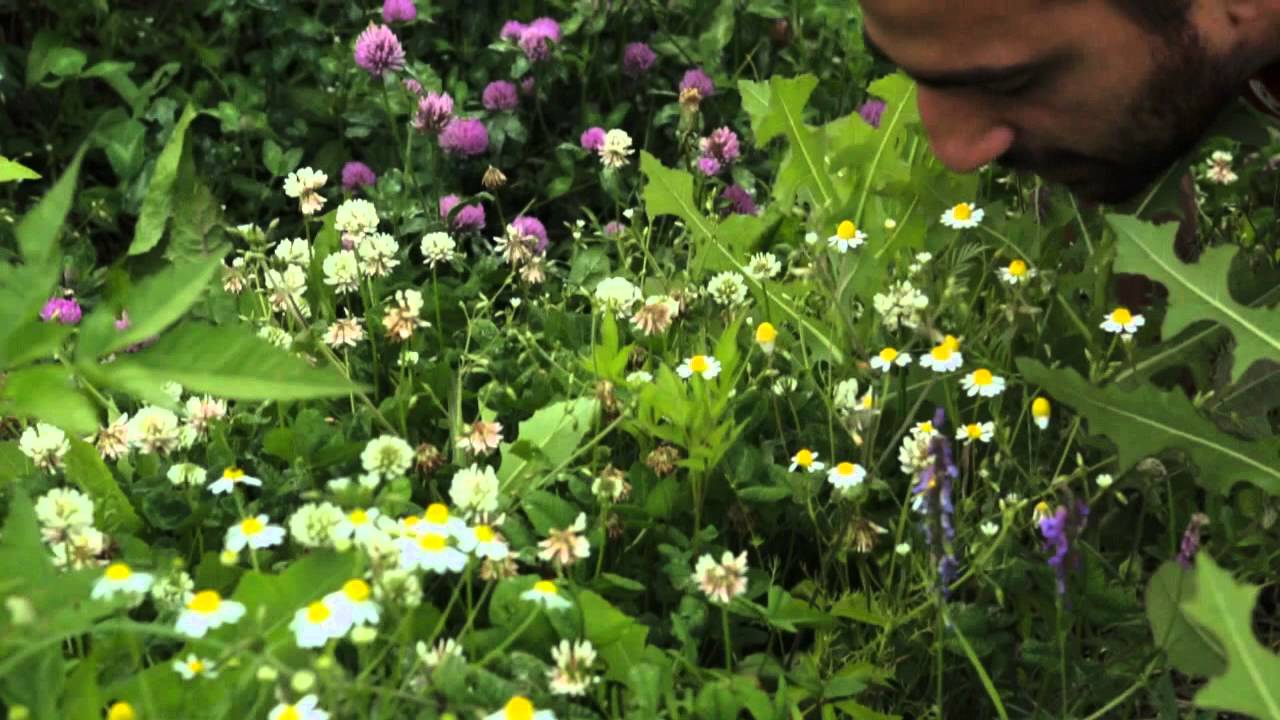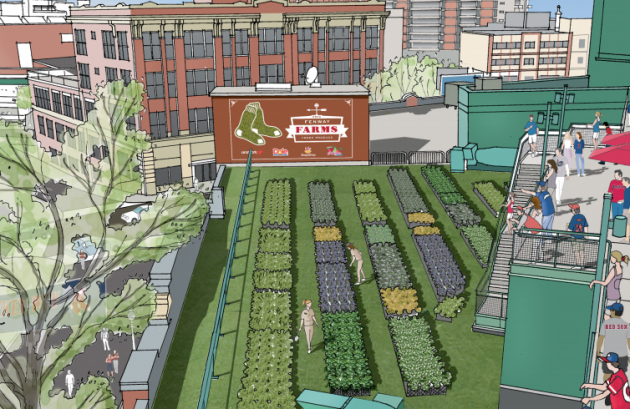What Our Food Is Really Doing to the Planet, in 15 Jaw-Dropping Images
When current science news is filled with pictures – incredible, beautiful, literally awesome pictures – of planetary bodies 3 billion miles away, it’s easy to forget what’s happening on the soil beneath our own feet.
California’s already experienced almost four years of drought, brutalizing the state’s ability to provide food to the country and the world beyond it. The state’s insatiable thirst, largely due to its high concentration of farms, is leaving its nonagricultural areas high and dry. But that’s not even the half of what our need for a full pantry is doing to the planet.
The “plastic sea,” a massive industrial agriculture area composed of greenhouses in Almeria, Spain, covers more than 45,000 acres.
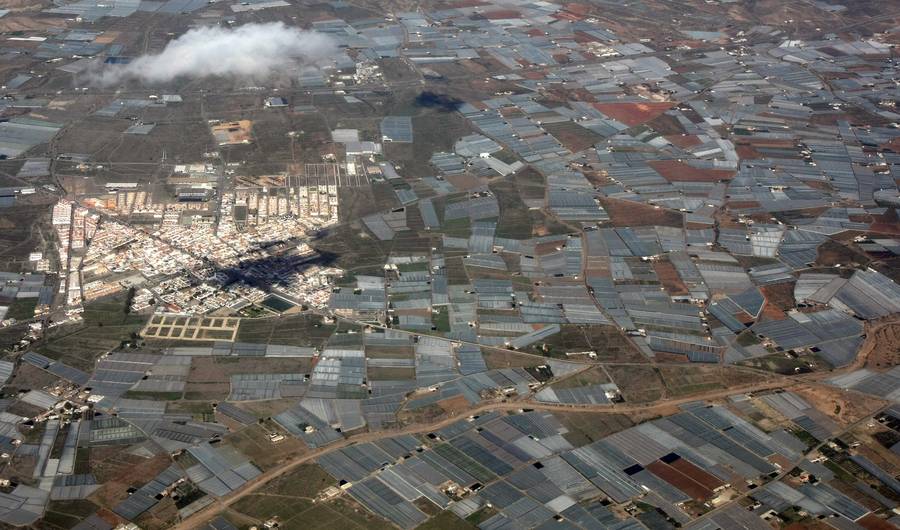
Ten years ago, a report in National Geographic claimed 40% of the Earth’s land was dedicated to agriculture. That was over half a billion people ago. As the world’s population grows at an alarming rate, more of the planet’s real estate needs to be turned into farmland. While that means more food for everyone, it also means destroying the nature beneath it.
The “plastic sea” employs an estimated 80,000 workers.
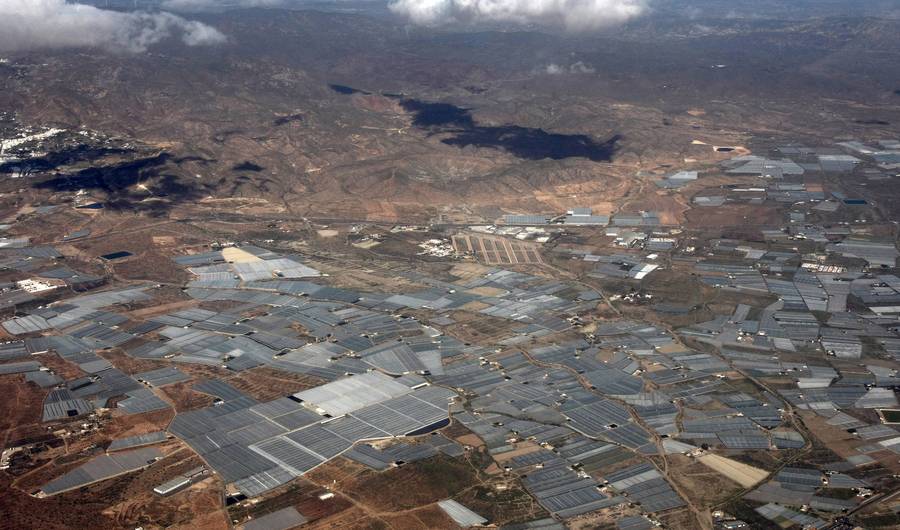
In Almería province, Spain, where a massive portion of Europe’s fruits and vegetables are grown, plastic greenhouses stretch across the country like creeping moss, overtaking quiet landscapes with hydroponic megafarms. “They block up dry riverbeds and destroy mountainsides but nobody does anything, however much we complain,” environmentalist Juan Antonio Martínez said about diggers carving terraces in a nearby province, according to the Guardian. “If there is a serious storm, much of this will be washed away.”
There’s evidence linking some of the pesticides used in those greenhouses to cancer and other health complications.

If findings from a professor in Granada province ring true, some of the chemicals in use have come with increased breast cancer rates among women and testicular issues in boys. But the money to be made from bolstering demand is enough to keep local authorities from coming down too hard on farmers not obeying the rules.
In 2012, it was estimated that the world’s population produced 2.6 trillion pounds of garbage – or the weight of about 7,000 Empire State Buildings.
Where Martínez lives, the greenhouses are mostly run using hydroponic systems, engineered to keep water use low and evenly distributed. In northern Saudi Arabia, however, where water is scarce and large swaths of real estate have been converted to farmland, the dwindling groundwater, originally the key to keeping Saudi Arabia’s wheat industry afloat, forced the country to search for more desperate options.
Irrigation farm fields near Hail, in Saudi Arabia, don’t use hydroponics. But that means huge water demands in the middle of a desert.
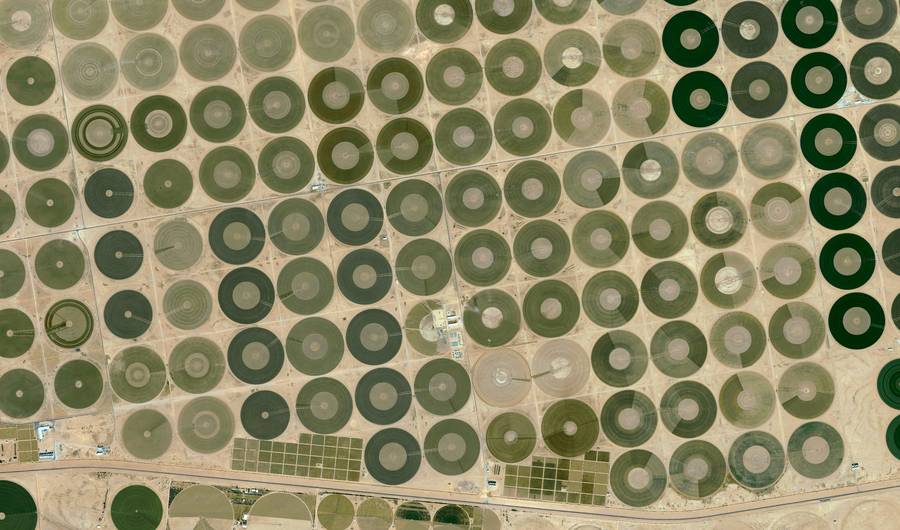
With so many farms, the country needs to look elsewhere for water.
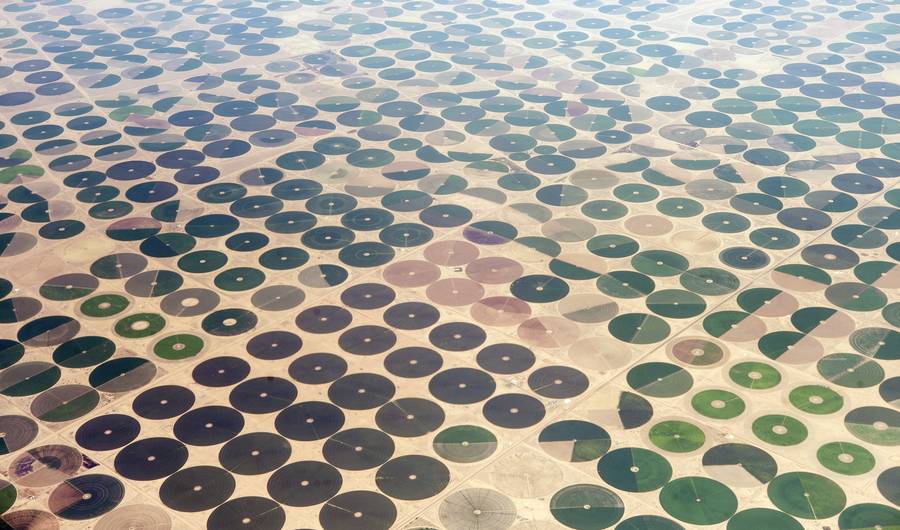
With low rainfall and high export demand, livestock farms in California are turning into dust bowls.
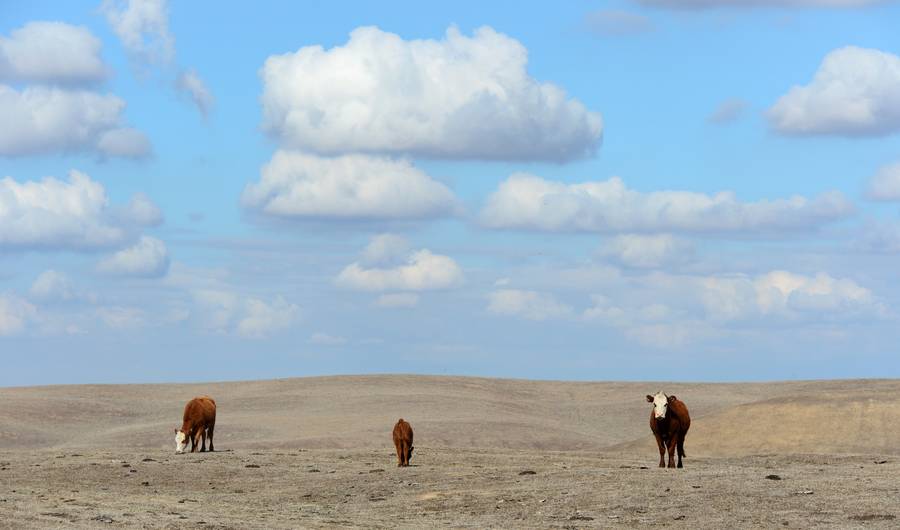
A 2013 study from researchers in Kenya, Australia and Austria found that the livestock sector across the planet produces 285 million tons of meat each year – which comes out to about 80 pounds of meat per person. That, of course, implies that the global community puts away a small person’s worth of animal parts every year. In reality, according to the researchers, Americans eat way more than most people in the world. We consume 270 pounds of meat a year on average.
The drought in California makes this usually lush pasture dry as a bone.
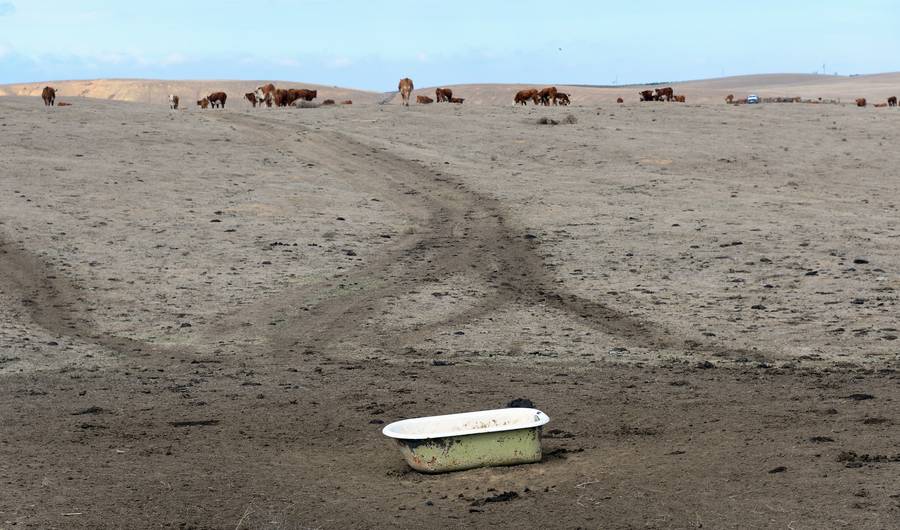
But the amount of meat we eat isn’t what’s striking here. First, global livestock produces enough methane – yep, burps, farts and manure – to affect the greenhouse gases affecting the atmosphere. Second, animals, especially big ones, need to eat to be eaten.
According to Time, 1.3 billion tons of grain are polished off by livestock every year. They’re like walking garbage disposals, and when they aren’t able to eat the grass of their pastures, like when their pastures turn into giant dust bowls, they have to turn to imported options. Grain comes from a lot of places. One of the major producers of cattle’s favorite carb is the incredibly thirsty Saudi Arabia.
Thanks to overfishing, some species of fish are caught faster than they can reproduce.
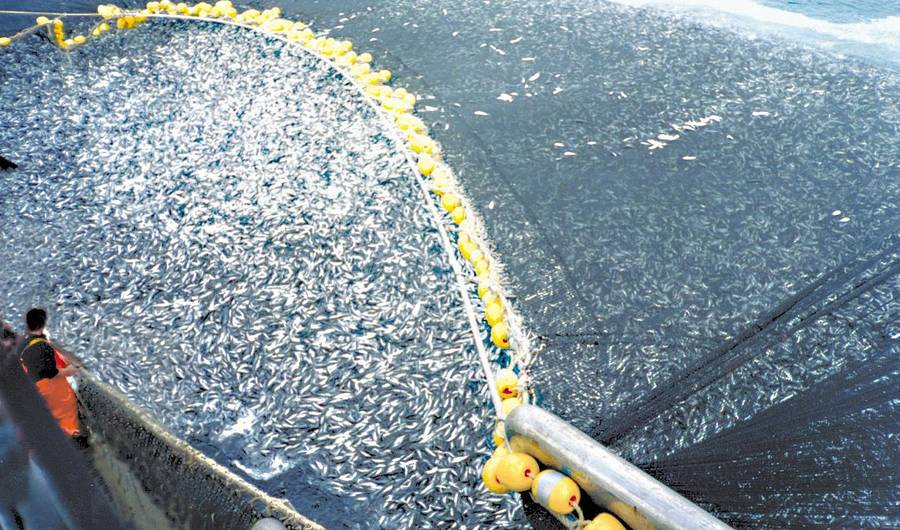
Thanks in no small part to the global appreciation for spicy tuna rolls, the ocean is running dangerously low on bluefin tuna, among other fish, due to overfishing. According to a 2013 report from the, the sushi mainstay’s population has dropped more than 96% in the Northern Pacific Ocean.
A huge percentage of the fish caught are too young to reproduce, making the population drop faster without offspring to buffer the species.
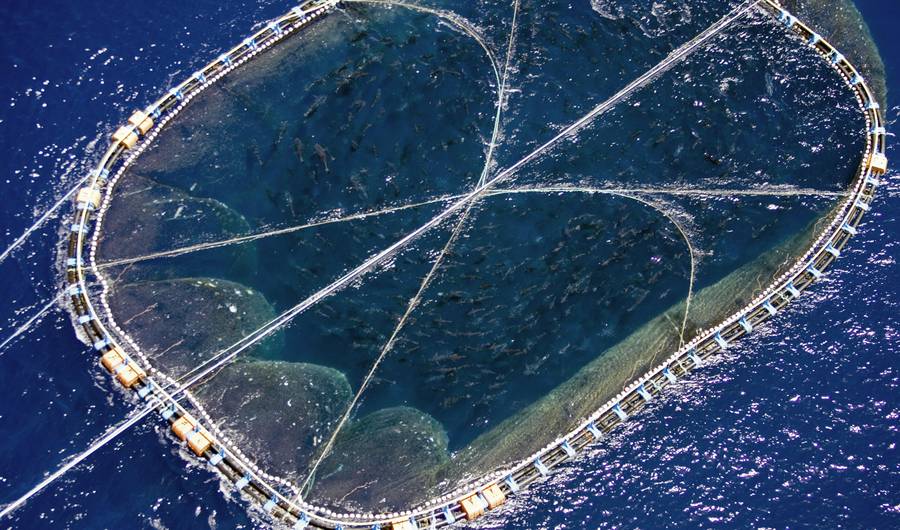
Bluefin tuna are, by nature, predators. And in the food chain, they keep the ocean balanced, going after schools of smaller fish and keeping them from overrunning the waters. Killing off a predator doesn’t sound too harmful for the environment. But when a top predator is knocked off from overfishing, it can create a butterfly effect, changing the ocean’s composition in ways we can’t know.
Almost all industrial plants function on fossil fuels, like the ones dug up at this oil field in California.

Even though humanity has been getting better about more efficient means of producing food, 85% of U.S. energy still relies on oil, coal and natural gas. But it’s not fueling trucks or tractors. It goes to producing chemicals. Five years ago, the U.S. Energy Information Administration estimated nitrogenous fertilizers, used for growing plants, accounted for 352 trillion Btu of natural gas for production. That’s a lot of drilling.
Fruits and vegetables are being grown in huge quantities. But they aren’t all getting eaten.

According to statistics from the United Nations Environment Program, the global community wastes 222 million tons of food annually. That means roughly one third of all the food coming from the Spanish greenhouses, the California livestock farms and everywhere in between doesn’t end up in a stomach. According to National Geographic, an typical family of four in the United States doesn’t use up to 1,160 pounds of the food it buys – averaging $1,484 going to waste every year.
Wasted meat, like the 600 tons a South Korean company had to incinerate, spoils and carries disease to other countries.
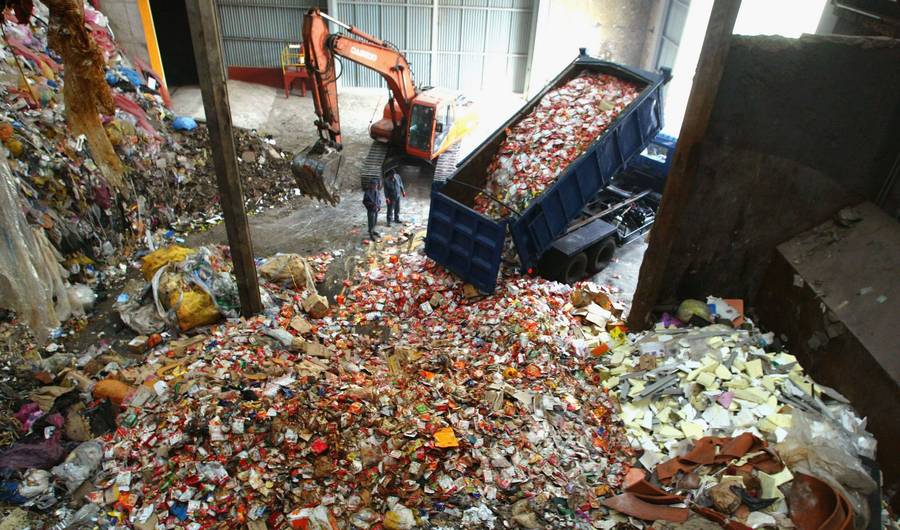
U.S. farms have had a few problems with diseased meat getting out to the world’s larger importing markets, not least of all in 2012 when a South Korean retailer had to put the kibosh on all U.S.-imported beef. Before that, a U.S. mad cow disease scare in 2004 led to a severe drop in the country’s then $4.3 billion beef export business, and around the world, importers who didn’t find out about the problem until it was too late had to find ways to dispose of the products. In Incheon, South Korea, that meant incinerating 600 tons (1,200,000 pounds) of raw meat.
Waste doesn’t always stay in its own country. Sometimes it ends up in massive garbage dumps, like this one in Haiti, which is over 200 acres.
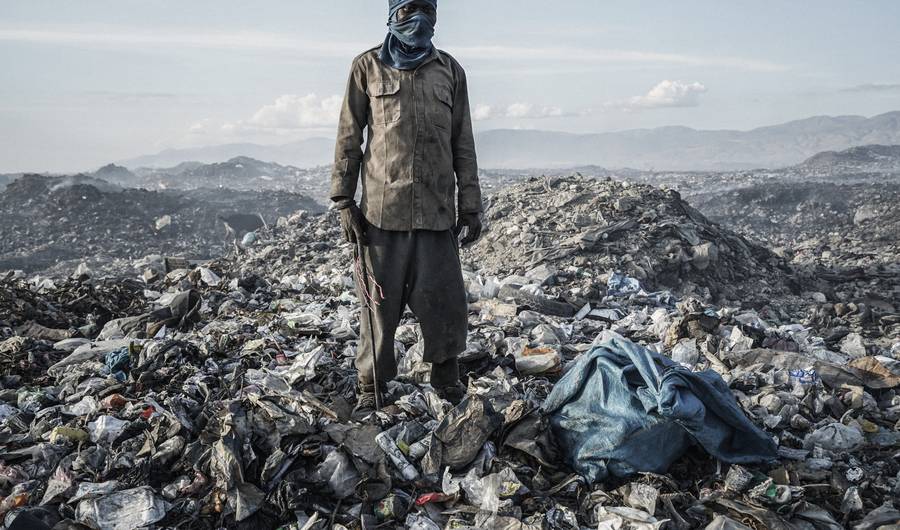
Whether from food or otherwise, it’s hard to know how much litter is actually created in the world. On New York City subways, an announcement politely informs riders that 1,443 tons of trash were removed from subway tracks in 2014. In the United States, 220 million tons of waste are generated every year, with over half ending up in landfills. And in 2012, it was estimated that the world’s population produced 2.6 trillion pounds of garbage – or as the put it, the weight of about 7,000 Empire State Buildings.
In places with poor or nonexistent waste management, the garbage gets eaten by animals, which in turn get eaten by people.
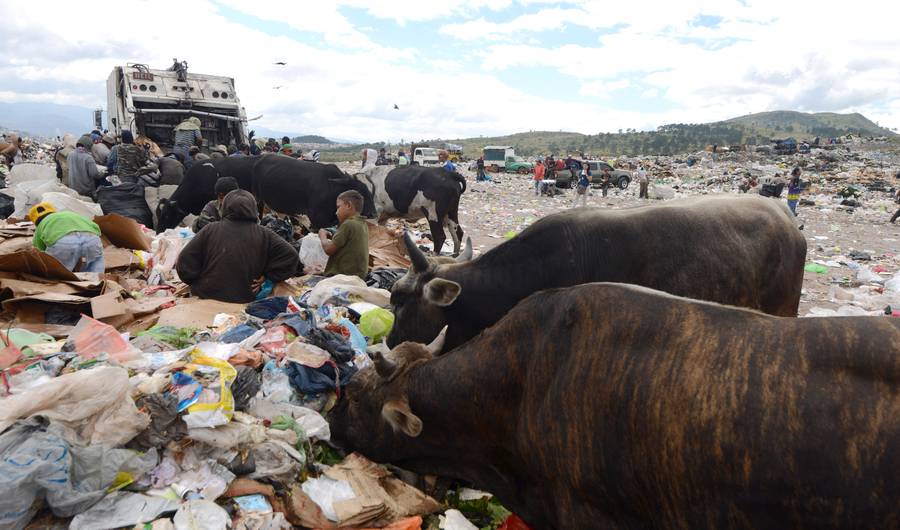
Depending on where you live, that 2.6 trillion number might sound high or low. For the people of Port-au-Prince, Haiti, where massive, 200-acre-plus dumps are scavenged for recyclables, it probably sounds right. Same goes for the electric waste dumps in Accra, Ghana, or the waste management program-less towns of Manila. For many people living in the U.S., we don’t have to witness all the waste piling up except on trash day. But it all goes somewhere.
But there are ways to approach agriculture differently for the sake of the planet.

Global moves are being made from different industries to keep us from starving and to learn to eat in less environmentally costly ways. That may be farming in our homes, printing our own food or engineering meat to take the incredible weight of raising cattle off the planet. But just increasing our technology dependence isn’t enough to save a planet ravaged by the people living on it. It’s time to pitch in.
These folks feed their family with a garden in their swimming pool – and you can, too
When Dennis and Danielle McClung bought a foreclosed home in Mesa, Ariz., in 2009, their new yard featured a broken, empty swimming pool. Instead of spending a small fortune to repair and fill it, Dennis had a far more prescient idea: He built a plastic cap over it and started growing things inside.
Thus, with help from family and friends and a ton of internet research, Garden Pool was born. What was once a yawning cement hole was transformed into an incredibly prolific closed-loop ecosystem, growing everything from broccoli and sweet potatoes to sorghum and wheat, with chickens, tilapia, algae, and duckweed all interacting symbiotically to provide enough food to feed a family of five.

Within a year, Garden Pool had slashed up to three-quarters of the McClungs’ monthly grocery bill (they still buy things like cooking oil and coffee and, well, one can’t eat tilapia every day). Within five years, it’d spawned an active community of Garden Pool advocates – and Garden Pools – across the country and the world.
What began as a family experiment and blog is now a 501(c)3 nonprofit with a small staff. Garden Pool has been voted the Best Backyard Farm in Phoenix, gotten press from National Geographic TV and Wired and Make, and formed a Phoenix-area Meetup group that has nearly a thousand members. It’s attracted hundreds of local volunteers, students, and gardeners who’ve helped build a dozen more Garden Pool systems in and around Phoenix.
Scientists and engineers from Cornell University, Arizona State University, and even the space industry have all visited Garden Pool. This spring, “GP” volunteers paired up with Naturopaths Without Borders to travel to Haiti and build a Garden Pool there. Plus, Dennis says, “we’ve helped maybe three dozen being built across the country” through email and phone consultations, “from Florida to Toledo to Palm Springs.”
At first, McClung just wanted his own family to live more sustainably. Now that he’s seen the all the traction these ideas are getting, and how awesomely productive a Garden Pool can be, he says, “I want everyone else to build great systems.”
And these systems are pretty great. Instead of soil, the Garden Pool’s plants grow on clay pellets or coconut coir. Excess moisture drips into the pond below, and that, plus a rain catchment system, means that the whole thing requires a tiny fraction of the water used in a conventional garden. This is especially crucial in a place like Mesa, which gets just a little over nine inches of rain per year.

Instead of commercial fertilizer, chicken droppings fall through wire mesh strung across the pool’s deep end, nourishing the algae and duckweed in the pond below. The tilapia eat the pond plants, release their own nitrogen-rich excrement, and the fish water then gets funneled (using a solar-powered electric pump) into the hydroponics system that grows the family produce.
The McClungs have added pygmy goats and a bunch of fruit and nut trees to the backyard mix, so their mini farm is starting to look a lot like a very hopeful – and very delicious – urban future.
Dennis says building your own Garden Pool is not as labor-intensive and complex as it sounds. In addition to free online tutorials like “Getting Started in Barrelponics” and “Growing Duckweed,” McClung teaches GP certification courses; so far, he’s certified about 20 “GP” enthusiasts in Arizona and about 12 more during the trip to Haiti this spring. He plans to help a few recent grads start their own Meetup groups in Los Angeles and New York.
He also just released the second edition of Garden Pool’s extensive how-to book, featuring 117 pages of detailed instructions, illustrations, photos, and QR codes that link to video tutorials. His goal is to encourage aspiring Garden Poolers to build and maintain their own aquaponics greenhouses, whether or not they’ve done anything remotely like it before, and whether or not they even have a pool. (One of Garden Pool’s main taglines is “use an old pool or just dig a pond!”)

Thanks to endless experimentation with new crops and filters and catchment systems, McClung claims his backyard is now “basically a Frankenstein laboratory” and not quite as pretty as the sparkling Garden Pool replicas and spinoffs he’s helped build around town. Various experiments have met with varying degrees of success (blueberries and amaranth didn’t do as well as eggplant and asparagus, for instance), but the list of things that grow like weeds in Garden Pool is long (McClung advises you to check out page 96 of his book).
He manages pest control by doing things like adding ladybugs for the aphids and selecting plants like marigolds and garlic, which repel whiteflies and spider mites, respectively. Since the system is closed and controlled, it’s a pretty fantastic way to experiment with organic gardening methods.
As far as they’ve come in the past five years, though, Dennis says they’re just rolling up their sleeves. Now that all the nonprofit paperwork is settled, Garden Pool staff can apply for grants, and, he hopes, “hop from place to place and make stuff happen.” He’d like to help build more Garden Pools in Haiti, Africa, South America, and across the globe, and eventually become something of an international hub for closed-loop system research.
Although Garden Pool is Dennis’s full-time occupation and has been for some years now, “it’s not a job yet,” he insists. “I love it. I dream about it. What inspires me is watching families’ lives being changed, watching communities change, observing the change.”
Fruit And Vegetable Storage Reinvented. No More Rotting & Wasting.
Are you sick of throwing away rotten fruits and veggies that were left forgotten in the back of your fridge?
Good news: It doesn’t have to be this way! And the best part is, you don’t even need your fridge.
The Denise is a set of three sections which allows fruits and vegetables to be stored longer without the need of technology or electricity. It is made entirely out of renewable and locally sourced materials.
If we take into account the complete life cycle of food, from the producer to our homes, food waste amounts to about a third of food produced worldwide. (FAO, 2011)
Here’s How It Works
The first section uses sand to naturally preserve the moisture of root vegetables. The tray allows them to be stored vertically, in their original position. This conservation principle is inspired from cellars which our ancestors used to keep vegetables throughout winter.
This section is designed for: Root vegetables such as shallots, celery, beetroots, carrots, leeks etc.
Some fruits and vegetables need to be hydrated daily while others do not tolerate low fridge temperatures. The Denise II is a ceramic bowl fitted with wooden slats that allows for the watering of fruits and vegetables. The collected water brings them the freshness and hydration they need. The bowl can be fixed on a wall, put on the dining room table, or simply left on the kitchen counter.
This section is designed for: Tomatoes, cucumbers, gherkins, squashes, melons, zucchinis, peppers, apricots, lemons, oranges, kiwis, exotic fruits, peaches, pears, aubergines.
The first compartment of this section is used for potatoes. Right above it is for apples. There is an air exchange between the two, as they have mutual conservation properties. The second compartment is to store garlic, onions, and French shallots.
This section is designed for: Apples, potatoes, sweet potatoes, garlic, onions, french shallots.
La Denise brings a simple and stylish solution to food waste in homes. By always having your fruits and veggies in sight, you are much less likely to forget about them and let them spoil in your fridge!
Like This Idea?
To reach their goal and put The Denise on the market, they need us!
Check out their Kickstarter page, donate what you can and/or share this article to help them reach their goal and share The Denise with the world!
Edward Norton is Soil
We all loved Edward Norton in Fight Club. Here he reminds us that perhaps the biggest fight in this life is one that will require more wit than muscle, more compassion than anger and more long-sighted understanding than ape-sighted reaction. Here is why the thin layer above the surface of our planet requires us to be a Peaceful …
4 Reasons Why This is The Future Food
The future food is called Entomophagy; the practice of eating insects – including arachnids and centipedes – and it is becoming popularized with every eco awareness campaign. I’ll explain concisely: It’s Nutritious. More iron than spinach and all 9 amino acids can be found in cricket flour. It looks like we’ve got a superior nutrient rich …
Organic Food Industry Explodes as Consumer Demand Spikes ” EcoWatch
Looks like organic food has gone from a new-age trend to a staple in supermarkets and many American diets. According to a new analysis from the Organic Trade Association (OTA), organic food sales in 2014 jumped 11 percent to $35.9 billion, claiming almost 5 percent of the total food sales in the U.S.
The numbers are a huge spike since the OTA first kept record in 1997, where organic food sales only totaled around $3.4 billion, accounting for less than 1 percent of total food sales.
Fruits and vegetables-the number one selling organic category-raked in $13 billion in sales, a 12 percent increase from the prior year. Organic fruits and vegetables now account for 12 percent of all produce sold in the nation. Organic dairy also jumped 11 percent in sales last year to $5.46 billion, the biggest percentage increase for that category in six years. Organic food has consistently far outshone the three percent growth pace for the total food industry, the OTA said.
There are many reasons why more consumers are buying organic, including the perception that it’s healthier, more sustainable and has fewer pesticides. As we previously reported, the Rodale Institute found that there is 7 percent pesticide residue in organic foods as opposed to 38 percent in conventional produce.
The industry has not only boomed due to consumer demand, the federal government-which decides which foods can be considered organic-is also spending a lot more money on this sector. As Quartz ′s food and consumer goods reporter Deena Shanker observed, “Mandatory spending on organics under the 2002 U.S. farm bill totaled a measly $20 million, but by 2014, that number had risen to $167.5 million.” Shanker also noted that the number of certified organic farms, ranches and processing facilities in the U.S. have almost tripled to a record 19,474 operations since 2002.
The data also showed that imports of organic corn and soybeans from countries such as Romania and India are booming because while demand for organics grows among U.S. consumers, there remains a “near-total reliance by U.S. farmers on genetically modified corn and soybeans,” according to Bloomberg News.
The U.S. is the top grower of corn and soybeans in the world and yet we are importing these products because about 90 percent of U.S. corn and soybeans are genetically modified, and thus, cannot be certified as organic. As a result, imports to the U.S. of Romanian corn rose to $11.6 million in 2014 from $545,000 the year before and soybean imports from India more than doubled to $73.8 million, according to Bloomberg News.
Meanwhile, the U.S. Department of Agriculture (USDA) is set to propose standards for organic seafood raised in the country this year. Currently, “organic” seafood sold in the country is not approved by the U.S. government. The varieties that are available from menus or the market come from European, Canadian or other countries’ standards or via a private certification company.
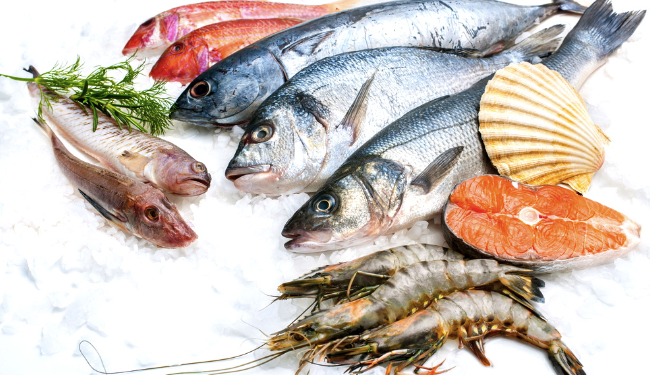
The U.S. is “trying to play catch-up on organic aquaculture,” Miles McEvoy, who heads up USDA’s organic program, told the Associated Press.
However, designating a fish as “organic” is much more difficult than a piece of fruit, and some environmental organizations have spoken out against the USDA’s proposed move.
“The designation ‘organic’ is directly related to whether the feed an animal has been reared on is organic, whether it has been exposed to chemicals or pesticides and whether it has been genetically altered,” Food & Water Watch said. “Because the food sources and environment of wild fish are completely uncontrolled, they should not be considered organic.”
The farmed fish industry also said they expect that the requirements for fish feed may be so strict as to be financially prohibitive, according to the AP. So it might be some time before you can buy U.S. certified organic seafood from your local fishmonger.
Fenway Park Opened a Rooftop Garden to Serve Homegrown Concessions
The oldest baseball stadium in the country, our beloved chapel known as Fenway Park, is constantly evolving in order to maintain an atmosphere and bevy of features designed to make Red Sox nation comfortable and keep them engaged.
On Thursday, April 9, the Red Sox announced its latest Fenway iteration: a rooftop garden aptly called Fenway Farms.
News of the new nursery comes shortly after Boston Mayor Marty Walsh took a tour of Fenway and digested 174 new seats, enhanced Wi-Fi, an interactive video wall for fans to take photos, activity space for children and two new 30″ high x 39.3′ wide LED ribbon boards.
According to the Red Sox, the garden will change seasonally but staple herbs and veggies include arugula, green beans, broccoli, carrots, cucumbers, eggplant, kale, lettuce, pea shoots, sweet peppers, tomatoes, basil, chives, cilantro, mint, oregano, parsley, rosemary, and thyme.
BostInno followed up with the Red Sox to see how this may affect food prices – consistently among the most expensive in the country.
“No, it will not affect pricing throughout the ballpark,” said spokesperson Zineb Curran.
The plan is to use the garden not only to serve home-grown concessions during games and other Fenway events, but to also use it go educate local youth on healthy eating and the importance of environmental preservation.
In June 2008, Fenway piloted growing tomatoes behind the pitchers mound of the bullpen.
“Two local companies from Somerville, Recover Green Roofs and Green City Growers, worked on the installation and planting of Fenway Farms,” added the club. “Recover Green Roofs installed the garden planters and irrigation system. Green City Growers planted the produce and herbs and will maintain the garden during its growing season.”
Polytunnel Repairs
Our advice when your polytunnel is due to be recovered use a specialist, they will get your cover set at the right tension the cost of this service out ways the cost of new covers because they dont last long enougth when trying to do urself, this goes for domestic gardeners and commercial business’s alike your time and your staffs time is better spent Doing what you do best and let the proffessionals look after your polytunnels Especially if your polytunnels are gutter linked multispans.
If you would like a list of great installers in your region please reply to this blog.
Find Out How Committed Your State Is to Local Foods || EcoWatch
For the fourth year, Strolling of the Heifers, a Vermont-based local food advocacy group, has ranked the 50 states (and DC) in terms of their commitment to local foods. The winners are in for the 2015 Locavore Index: the top four are Vermont, Maine, New Hampshire and Oregon. These states also topped the list in 2014. Massachusetts moved into fifth place (from 11th in 2014). Rounding out the top 10 were Wisconsin, Montana, Hawaii, Rhode Island and Connecticut.

The index looks at the number of farmers’ markets, the number of CSAs, the number of food hubs-all compared on a per-capita basis-and the percentage of each state’s school districts with active Farm-to-School programs.This year’s index includes new information from the Census of Agriculture, which “provides a direct measurement of the per-capita dollar value of food products sold directly by farms to consumers through farm stands, farmers’ markets and CSAs,” says Strolling of the Heifers.
The index shows that “the various policies at the national and state levels that encourage local food programs are having measurable results,” says Orly Munzing, founder and executive director of Strolling of the Heifers. “At the Federal level, there’s the Know Your Farmer, Know Your Food program which helps promote farmers markets and provides grants for farm-to-school and farm-to-institution programs. Many states also have active programs to encourage local food consumption, and Vermont’s Farm-to-Plate network is a national leader in this respect. All these programs are good for farmers, good for consumers and they help to build stronger communities.”
Find out how your state ranks:

GMOs Will Not Feed the World, New Report Concludes ” EcoWatch
By the year 2050, the Earth’s population will reach more than 9 billion people. With so many mouths to feed, agribusiness giants have argued that genetically modified crops are the answer to global food security as these plants have been spliced and diced to resist herbicides and pesticides and (theoretically) yield more crops.
However, a new analysis from the Environmental Working Group (EWG) slams this conventional agribusiness argument-and recommends much more sustainable solutions to feed the world.
The report, Feeding the World Without GMOs, argues that genetically engineered crops (also known as GE or GMOs) have not significantly improved the yields of crops such as corn and soy. Emily Cassidy, an EWG research analyst who authored the report, found that in the last 20 years, yields of both GE corn and soy have been no different from traditionally bred corn and soy grown in western Europe, where GE crops are banned. Additionally, a recent case study in Africa found that crops that were crossbred for drought tolerance using traditional techniques improved yields 30 percent more than GE varieties, she wrote.
The report also said that in the two decades that GE crops have been a mainstay in conventional agriculture, they “have not substantially improved global food security” and have instead increased the use of toxic herbicides and led to herbicide-resistant ” superweeds.” (FYI: superweeds have spread to more than 60 million acres of U.S. farmland, wreaking environmental and economic havoc along the way).
She pointed out that while corn and soybeans take up the vast majority (about 80 percent) of global land devoted to growing GE crops, they are not even used to feed people but instead as animal feed or fuel.
Unfortunately, this practice is unlikely to change in light of increased consumption of meat around the world, as well as U.S. biofuel policy requiring production of millions of gallons of corn ethanol to blend into gasoline, Cassidy observed. “Seed companies’ investment in improving the yields of GMOs in already high-yielding areas does little to improve food security; it mainly helps line the pockets of seed and chemical companies and producers of corn ethanol,” she said. “The world’s resources would be better spent focusing on strategies to actually increase food supplies and access to basic resources for the poor, small farmers who need it most.”
Gary Hirshberg, chairman of Just Label It, an organization advocating for federal labeling of GMO foods that also provided funding for the EWG report added, “Biotech companies and their customers in chemical agriculture have been attempting to sell the benefits of GMOs for two decades. Between exaggerated claims about feeding the world and a dramatic escalation in the use of toxic pesticides, it is no wonder consumers are increasingly skeptical.”
Fortunately, as Cassidy noted, there are ways out of this mess that will not only produce enough food for the world’s burgeoning population but will also make minimal impacts on our environment. It comes down to four main approaches:
- Smarter use of fertilizers: Fertilizer should be used in places with nutrient-poor soils where it would have the greatest impact, instead of over-fertilizing industrial-scale farms. This switch could increase global production of major cereals by 30 percent, the report said.
- A dramatic shift in biofuels policy: A World Resources Institute analysis found that by 2050, biofuels mandates could consume the equivalent of 29 percent of all calories currently produced on the world’s croplands. According to the report, reversing course on food-based biofuels policies could alleviate the need to double the global calorie supply.
- A significant reduction in food waste: By weight, a third of all food grown around the world-accounting for a quarter of calories-goes uneaten, according to the United Nations’ Food and Agriculture Organization. Food gets tossed before it reaches the market, much less anyone’s plate. So in theory, by eliminating all food waste in fields, grocery stores and at home would increase the global calorie supply by 33 percent, the report noted.
- A better diet: Meat production currently uses up three-quarters of all agricultural land, and on average, it takes about 10 calories of animal feed to produce just one calorie of meat. This suggests that a shift from grain-fed beef to a diet emphasizing chicken or grass-fed beef could reduce the amount of land devoted to growing animal feed such as corn and soy (Beef also stands far above the production of other livestock for its negative environmental impact).
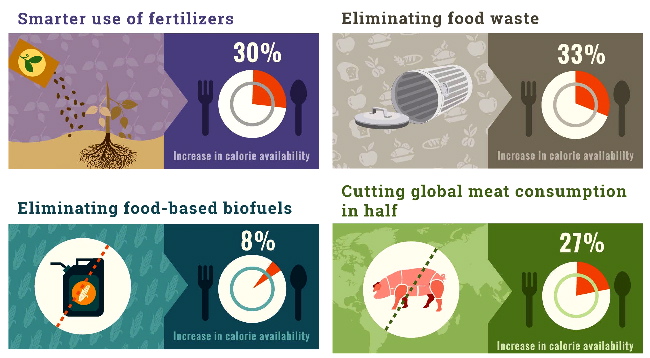
Cassidy concluded that investment in genetic engineering is no substitute for solving the real causes of food insecurity and poverty, such as improving access to basic resources and infrastructure in developing countries.
“The alternative strategies of smarter resource use, improving the livelihoods of small farmers, reducing food waste and changing diets could double calorie availability and reduce the environmental burden of food production, all without relying on GE foods,” she wrote.
We wonder what Bill Nye thinks about this?
Let’s Turn Suburbia Into A Local Food Mecca
Let’s Turn Suburbia Into A Local Food Mecca
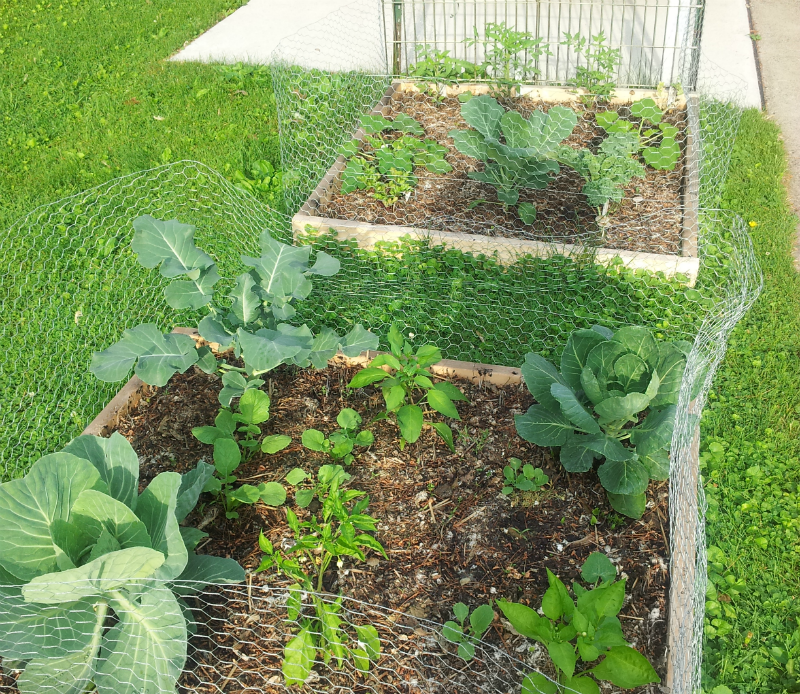
These days anybody who has a Netflix account has likely seen the numerous documentaries about our food problems. The ‘Why’, shouldn’t be hard to understand for many of you, you already see there needs to be change.
If you’re not familiar with such documentaries as Forks Over Knives, The Beautiful Truth, Food Inc., and The Future Of Food, then keep reading to understand.
The root cause of our food problem is our mistreatment of the soil. We haven’t understood the importance it plays to our health. As Dr. Max Gerson discovered in the early 20th century, the soil is our external metabolism, and therefore it plays a huge role in our overall health.
Today, conventional agriculture mistreats the soil by growing monocultures and depleting the soil of it’s essence, it’s life giving minerals and nutrients. The soil is so dead in fact that farmers have to inject chemical fertilizers just to get it to grow anything.
The main fertilizers they use consist of 3 nutrients: nitrogen, phosphorous, and potassium. So how many nutrients make up healthy soil? There are 52 minerals needed for optimum soil health, and consequently human health. For more on this read here.
Another major problem is that our food travels too far to reach our plate.
So why does it matter how far away our food travels? Besides the effects on the climate, the food is just not as nutritious. That’s right. Food that is being grown to ship long distances is picked before it has actually ripened. This is so the fruit or vegetable isn’t spoiled by the end of it’s long journey. They’re also often treated with chemical gasses to delay the ripening process even further. Why does this matter? Studies have shown that fruits and vegetables are most nutritious when they’re allowed to fully ripen on the vine.
These are not the only 2 problems with our current food system, but they are arguably the most troublesome.
Why Suburbia?
Suburbia is arguably the greatest misallocation of human resources. It’s tried to provide the benefits of living in the country and living in the city, but instead has given us the disadvantages of both. For more on this topic, read The Geography of Nowhere: The Rise and Decline of America’s Man-Made Landscape by James Howard Kunstler or watch the documentary “End Of Suburbia“.
So we have these huge sprawling suburban areas that have backyards full of something that is grown almost entirely for aesthetic purposes: grass.
It’s already bad enough that we’re utilizing the rainfall to grow grass instead of food. To top it all off however, homeowners will actually water their grass, wasting even more of our very limited, very precious resource: water
There are a growing number of homeowners that understand the problems, and want to be a part of the solution but they’re too busy with work and their families.
What to do!?
Become A ‘Natural Urban Farmer’
Many believe organic farming to be more difficult and less productive than conventional farming. You don’t get to use chemicals and earth polluting machinery after all right?
This just isn’t the case if you understand ‘ natural farming ‘ principles or ‘do-nothing farming’ as it’s also called.
This method of farming was pioneered by Masanobu Fukuoka of Japan. He was able to produce just as much rice as conventional rice farms by challenging everything about the way conventional farming is undertaken. You can learn more about Masanobu Fukuoka by watching this short documentary.
Natural Farming is a very efficient way to grow healthy soil and healthy crops. Mr. Fukuoka discovered that by working with nature, instead of against it, you can achieve much greater results with much less effort.
Growing in this manner has many benefits, including the following:
- Decaying organic matter becomes valuable ground cover that helps the soil to retain moisture, stay cool and serves to prevent erosion.
- When employing proper no-till growing methods, weeds have trouble ever getting started, thus drastically reducing any work load related to weed removal.
- Returning organic matter to the soil helps to naturally fertilize the ground by adding nitrogen.
Natural Farming How To
Here’s a simple video showing how to create your own ‘no dig’ or ‘no-till’ garden. There’s a bunch of awesome videos on Youtube if you just search “natural farming, no till farming or no digg farming”.
Here are the steps I’ve taken for my own garden beds.
Step 1: Cardboard
After you’ve decided where you’d like to put your first bed, the next step is to kill off the grass and weeds in that spot. A popular way of doing this is by using cardboard. Make sure you’ve removed any staples or tape from the cardboard. Then lay it down, overlapping slightly.
Wet the cardboard thoroughly before continuing to the next step.
Step 2: Pile on the soil/compost/organic material
As shown in this video, ideally you want to use a combination of brown/dried organic material and green. If you don’t have this, you can start with compost or organic potting soil.
You can usually find cheap soil/compost from local small farms or by looking on craigslist.
Make sure to water the layers as you add them.
Step 3: Worms
You can find these red digger worms at most local nurseries. Worm castings are invaluable for your garden due to it being a highly nutritious fertilizer. The worms themselves also help to keep the soil loose and aerated.
Step 4: Mulch
The last layer of grass or hay will serve as mulch. Again, mulch is important for a few reasons. It helps to bring fertility back to the soil, protect from soil erosion, and helps soil to retain moisture by protecting it from the hard sun.
It’s important not to use grass treated with lawn chemicals.
Step 5: Seed/Transplant
Depending on which route you take, now it’s time to plant your seeds or transplant seedlings you started indoors. You’ll want to find your counties planting calendar to know what crops your region supports and when you should plant them. It takes a lot of the guess work out of it.
Step 6: Water
Unless you live in a desert, or experiencing a drought, you shouldn’t need to do much watering. That’s the beauty of the mulch.
If you live in a desert like myself, you should still keep watering to a minimum so as to encourage deep root growth.
This new smartphone app called Edyn can help you take a more analytic approach to keeping tabs on soil moisture.
That’s It!
Knowing how to turn your corner of suburbia into a local food mecca can increase the health and vitality of your family, your neighbors, and yourself. You just need to do it!
Start small, and don’t burn yourself out. Start with one or two garden beds this upcoming grow season. Find out what kinds of crops grow well in your region of the world, and just start with a couple.
Once you have mastered ‘no-till’ gardening, simply offer to help your neighbors to do the same in their backyard. If they don’t have enough time on their hands to do it themselves, offer to do it for them in return for a percentage of the harvest or just because you want to make a difference in your community. It’s up to you!
What are you to do with extra produce? You could sell it at the farmer’s market. Or you could just give it as a gift to your family and friends. In return, I’m confident they’ll express their gratitude by gifting back in due time. This is what community is for. It’s time to disrupt this poisonous food chain and create the community we want to live in. Be the change we want to see in this world.
Inspired? Tips Welcome!
I publish all of my writings online at no upfront cost. The way I see it, online publishing allows me to reach a massive amount of people at little cost. So, instead of listing a price for my work, I’ve decided to just give it away and let you determine it’s value after you’ve evaluated it. After all, how do I know what the value will be to you? If it brings you no value, I want no compensation.
If you would like to help support me and my work please feel free to tip me via Bitcoin here.
Cheers,
Steve Longoria
http://yardbounty.com

